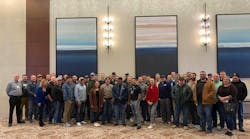Homeowners trust technicians. They figure out why a system is not heating or cooling. They restore the comfort and the trust, and a mother can rest assured knowing it’s all going to be okay now that the heat is back on – everyone will sleep comfortably tonight. So when that technician asks, “Are there any rooms that are hard to heat and cool?,” the homeowner trusts him or her enough to answer honestly.
If a homeowner says yes, they do have hot and cold spots, then the technician is in a position to follow through and help the homeowner take care of their family. Let’s see where this can go:
The technician asks what room in the home is uncomfortable and the customer says, “The room over the garage.” Tech: “What happens in that room? Is it a closet, a bathroom or maybe a bedroom?” Homeowner: “It is our daughter’s room.” Tech: “Is it uncomfortable in the summer or the winter or both? What have you done to help it be more comfortable?”
The homeowner says, “When it’s cold, it is really cold in there and we used a space heater a couple of years ago but I was afraid it was dangerous and took it out.” Tech: “What does she do when it is really cold now? And, if you don’t mind me asking, what is her name?” Homeowner: “Her name is Miranda and when it is really cold she comes and gets into bed with her dad and me.” Tech: “Are you okay with that or would you rather she be comfortable in her own room?” Homeowner: “Well, we would love to have her stay in her room. And, her feet are cold.”
Tech: “So, Miranda’s room is cold when it is really cold outside. And, you have tried space heaters but they are dangerous. When she gets cold she comes and gets in bed with you and your husband. If I could help you guys get Miranda back in her own room, maybe get those cold feet off of you, would you want me to help you with that?”
If the technician was able to create emotion by asking in-depth questions then asks a solution based tie-down the customer should want to do the right thing responding with a “yes” to getting help.
There are three important questions a technician should ask a customer. The first, of course is:
Where in your home is it hard to heat and cool?
The other two are:
Who in your home suffers from allergies, asthma or any respiratory-type issues?
Do your utility bills seem higher than they should be?
There are two important things that have to be incorporated into this questioning. First, when you ask these questions you have to ask in-depth qualifying questions that create emotion. When you create emotion, the homeowner feels the need to do something about it. When you create emotion your customer feels that you are sincere about wanting to help them.
Second, follow up with a solution based tie-down. When a homeowner becomes emotional about wanting their family to be more comfortable, healthy and/or to stop spending lots of money on high utility bills, they want to see options that will help them. When the technician asks, “If I could help you with that, would you want me to?,” most people will say “yes.”
Now the technician has the opportunity to help with indoor air quality solutions to help with the respiratory issues. When we then educate homeowners on how filters work, most of them can tell the technician which number filter would be best for their family. When we show a homeowner the bio-growth in their coil compartment and educate them on how the ultraviolet rays of the sun do not allow that type of growth to occur, they want to have an ultraviolet light source to protect their family.
When the homeowner has areas of their home that are uncomfortable, the technician has the opportunity to educate them about systems that can help level out the temperatures in their home. How a two-stage or multi-stage system will make those rooms more comfortable. Maybe even get Miranda and her cold feet back in her own room.
Selling technicians will create more interest in indoor air quality and system upgrades when they master asking these three questions. There has to be a series of questions behind each question. Creating emotion is the key. When a homeowner starts to feel the need to get Andrew to breathe better, get Miranda back in her own room and save money with lower utility bills, they listen to ideas. They listen when the technician educates them on how they can get results. They have a true desire to have a healthy, safe, comfortable home.
Technician communication & selling is one of the most important areas of any contracting company – it drives the customer experience, your brand reputation and, with those, revenue. It creates return cutomers. To learn more, and to receive a complimentary technician communication & selling training package, visit EGIA.org/cbs-techselling.
Mike Treas brings experience in the contracting industry as a sales manager and comfort advisor for one of the largest and most well-respected residential heating and air conditioning contractors in the United States. He has personally worked with hundreds of contracting companies across North America conducting training and consulting in the areas of sales, sales management, business management, customer service and technician lead generation training. His background consists of 35 years in sales and sales management bringing expertise, knowledge, techniques and strategies proven in the contracting industry to increase sales. He is an EGIA Contractor University faculty member.









